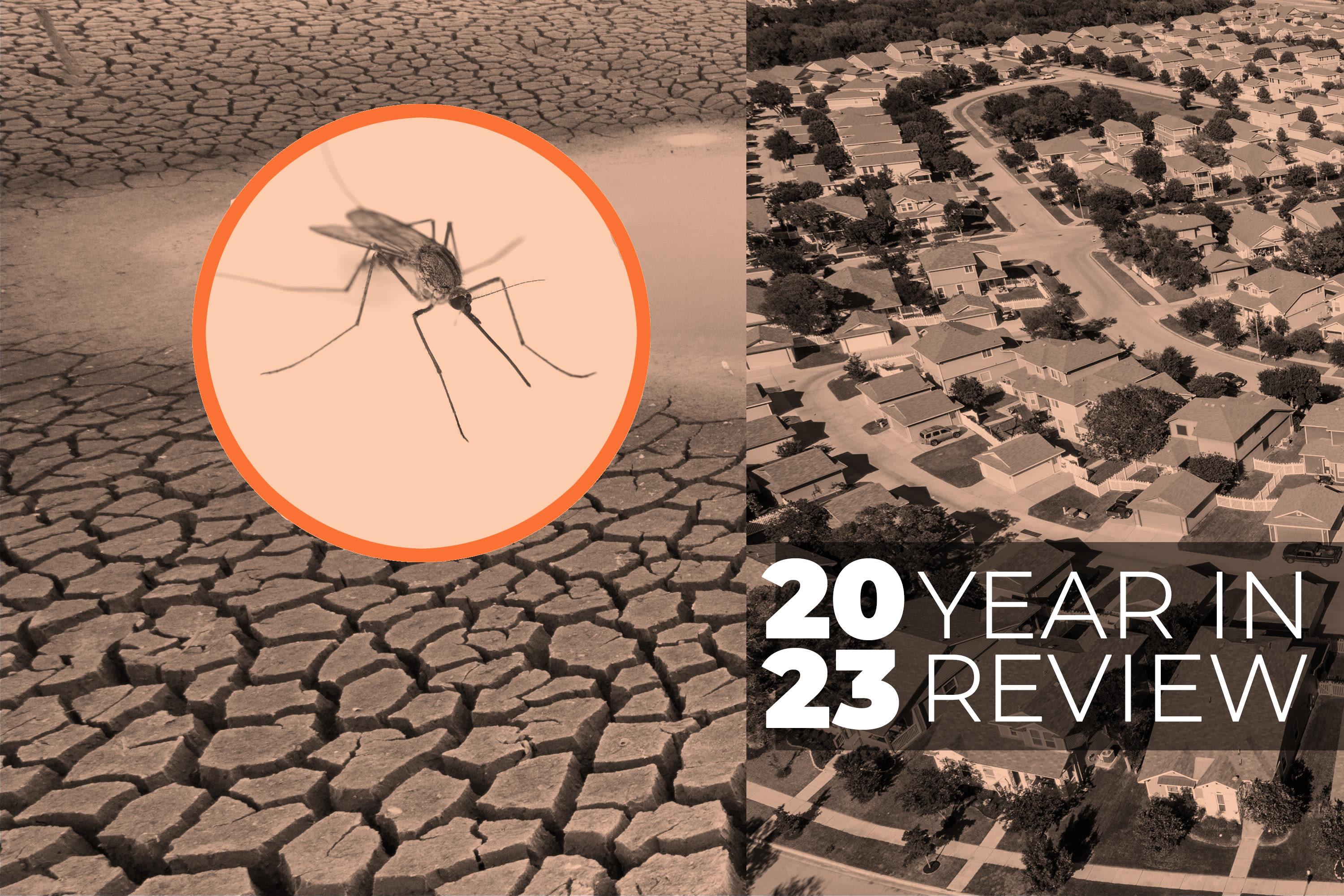Red Tide Continues to Affect Sarasota's Beaches and Wildlife

Fish killed by red tide on a beach in St. Petersburg.
Image: Leigh Trail/Shutterstock.com
The Florida Fish and Wildlife Conservation Commission's red tide status map is punctuated by little red and orange dots on the southwestern coast of Florida.
New Pass, Lido Beach, Siesta Beach, Turtle Beach and Nokomis Beach are all marked red, and that’s not a good thing.
Red means that a high concentration (more than 1 million cells per liter) of Karenia brevis, the microorganism that causes red tide, is present in water samples. In parts of Sarasota, including New Pass and Siesta, Conservation Commission scientists have seen concentrations as high as 10 million cells per liter, rivaling some of the higher levels observed in Pinellas County in recent weeks. At least 1,700 tons of marine debris, including dead marine life, sand and seaweed, has been removed from Pinellas County beaches and waterways.
Despite the high readings, scientists can't predict what will happen next. There’s a chance the bloom will worsen in Sarasota Bay and there’s a chance that it will disperse.
“It’s always hard to say for how long and what the severity of that event might look like,” says Kate Hubbard, a research scientist with the Conservation Commission's Fish and Wildlife Research Institute.
The bloom that has reached a fever pitch now in the Tampa Bay area was actually first spotted in December 2020 in Lee County, according to Hubbard. A number of factors have affected how the bloom has spread. Drought conditions caused water to have a particularly high salinity, which is conducive to algae growth. And scientists acknowledge that the Piney Point leak, which caused the release of 215 million gallons of wastewater into Tampa Bay, has likely exacerbated the bloom.
“Our messaging is consistent in saying that there are a number of different things that made this particular event as bad as it was and Piney Point didn’t cause the red tide this year,” says Hubbard. “Piney Point was another factor that unfortunately added a lot of nutrients. Although we can’t definitively say that these things are linked, it does seem very likely that that had something to do with the bloom this year.”
Last week, the Suncoast and Tampa Bay Waterkeepers hosted an event with the executive directors of the Sarasota Bay and Tampa Bay Estuary programs. Suncoast Waterkeeper founder Justin Bloom said that the effect of the Piney Point discharges on red tide was clear.
“There’s a direct correlation between Piney Point releases and the red tide that is impacting the region now,” said Bloom. “Everybody acknowledges that red tide is a naturally occurring phenomenon, that Karenia brevis is present pretty much every year and that human impacts and human pollution can trigger a red tide and can contribute to its severity, intensity and duration."
Hubbard likens the current bloom to one that occurred in 1971 and was precipitated by similar conditions—drought and high salinity.
Bloom made the same comparison, but for a different reason: the advent of the Clean Water Act in 1972. Before that, pollution from “rudimentary sewage treatment facilities” led to severe red tide blooms and an unhealthy bay, he said.
“We’ve been in recovery since then until now,” Bloom said. “This has erased an incredible amount of progress that has cost many millions of dollars.”
To Bloom, it doesn’t come as a surprise. In fact, he was waiting for it.
“I think everybody was bracing ourselves for an impact. We just didn’t know how and when, because it’s unprecedented,” he said. “It just took some time for it to manifest itself.”
That’s not how Florida Gov. Ron DeSantis sees it. At a press conference last week at the Conservation Commission's Fish and Wildlife Research Institute in St. Petersburg, the governor was direct.
“The scientific consensus is clear. [Piney Point] didn’t cause the red tide. The red tide was here. The biggest impact on Tampa Bay was Elsa, unfortunately,” DeSantis said. “Here’s the thing: We’re mothballing Piney Point. I went to the Legislature. We got $100 million. And as we’re doing all this research on red tide in the future, we have in place the ability to put that out to pasture.”
“I think it is a mischaracterization if anybody suggests that the fish kills were a result of Elsa or that Elsa had any significant contribution to the red tide,” Bloom said. “It just pushed it around.”
So will things get worse?
“It has to be a wait-and-see,” Bloom said. “I think that the conditions are prime for a really bad tide.”



